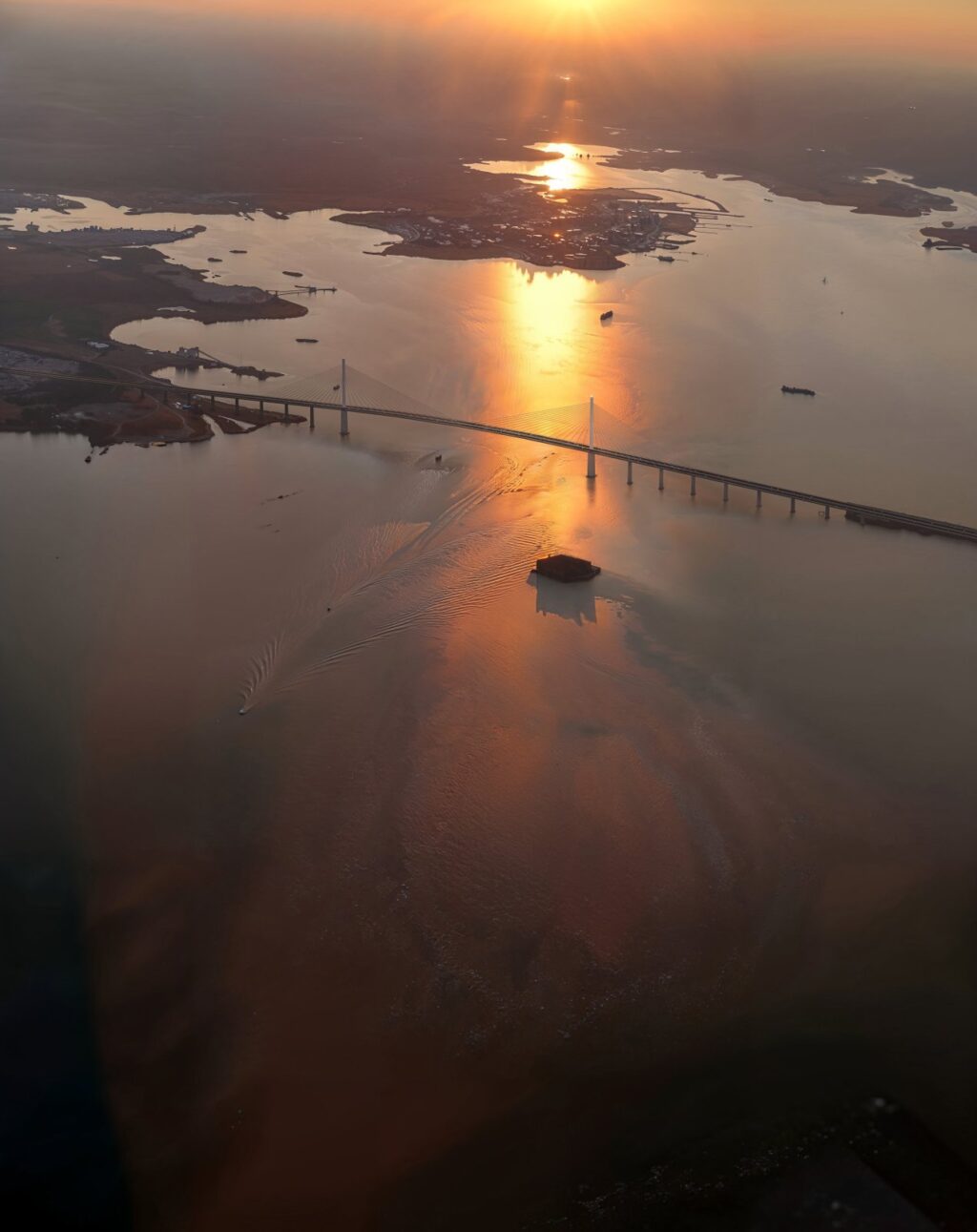Gateway to America: A New Bridge for Baltimore by CRA – Carlo Ratti Associati

Following the collapse of the Francis Scott Key Bridge in Baltimore, Maryland, in March 2024, international construction group WeBuild, together with design office CRA-Carlo Ratti Associati and French consulting engineer and designer Michel Virlogeux, have unveiled the first proposal for a replacement bridge.
The design, which follows a cable-stayed approach that would redefine the entrance to the historic Baltimore Harbor and restore a lasting symbol of the city, improves several functional characteristics of the old bridge, including features that will enhance safety and long-term adaptability.
Image © CRA – Carlo Ratti Associati
By enlarging the bridge’s main span from 1200 ft to 2230 ft (700 m), the primary support pillars will be situated in very shallow water (a depth of approximately 23 ft), well away from the navigation channel used by large vessels. This approach aims to ensure that accidents such as the one that occurred last March, causing the former bridge to collapse, will not happen again.
Furthermore, a larger roadway, with a new lane added in each direction, will accommodate increased vehicle capacity, addressing the high traffic levels across the bridge. The design also increases clearance from 185 ft to 230 ft (70 m), in accordance with the shipping industry’s latest standards and enabling the Port of Baltimore to remain a major international harbor in the years to come.
Image © CRA – Carlo Ratti Associati
The project follows Professor Carlo Ratti’s work at the MIT Senseable City Lab, whose project “Good Vibrations” investigated innovative ways to monitor the structural safety of bridges using cellphone data. Drawing on this research, the proposed smart features of the project allow for safe traffic management and predictive maintenance techniques.
The project is designed in collaboration with renowned French consulting engineer and designer Michel Virlogeux, who designed several of the world’s most significant cable-stayed bridges, including Lisbon’s Ponto Vasco da Gama and the tallest bridge on Earth, the Millau Viaduct in the Occitania region of France.
Image © CRA – Carlo Ratti Associati
The Baltimore design has been developed for the international construction group Webuild, whose Italian branch was responsible for the reconstruction, carried out in record time, of the Ponte Morandi in Genoa, Italy, which collapsed in August 2018 following severe weather.
In terms of sustainability, Baltimore’s cable-stayed design is one of the most material-efficient ways to build at the proposed span, minimizing the project’s embodied carbon. Moreover, it avoids the need to construct artificial islands to protect the pillars, which would considerably disturb the ecosystem of the Patapsco River, which is home to several native migratory species of fish.
Image © CRA – Carlo Ratti Associati
The design also aims to minimize disturbance to the “accidental bird sanctuary” on the nearby artificial island of Fort Carroll. Reflecting a commitment to renewable energy solutions, the design optimizes energy efficiency through the installation of photovoltaic panels across the whole span.
The new bridge will once again be a shining symbol of the city of Baltimore, and of the United States as a whole, marking the entrance to one of the most significant shipping ports on the East Coast. This proposal is one of many projects that CRA has developed as part of its commitment to innovation and energy efficiency. Source and images Courtesy of CRA – Carlo Ratti Associati.





